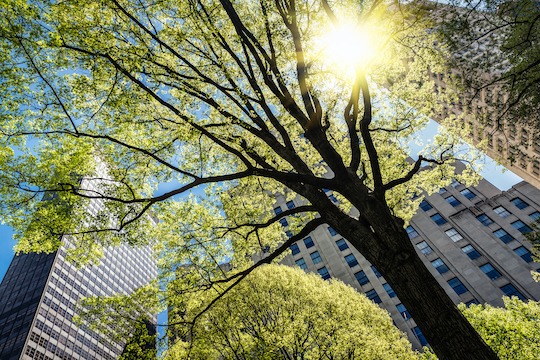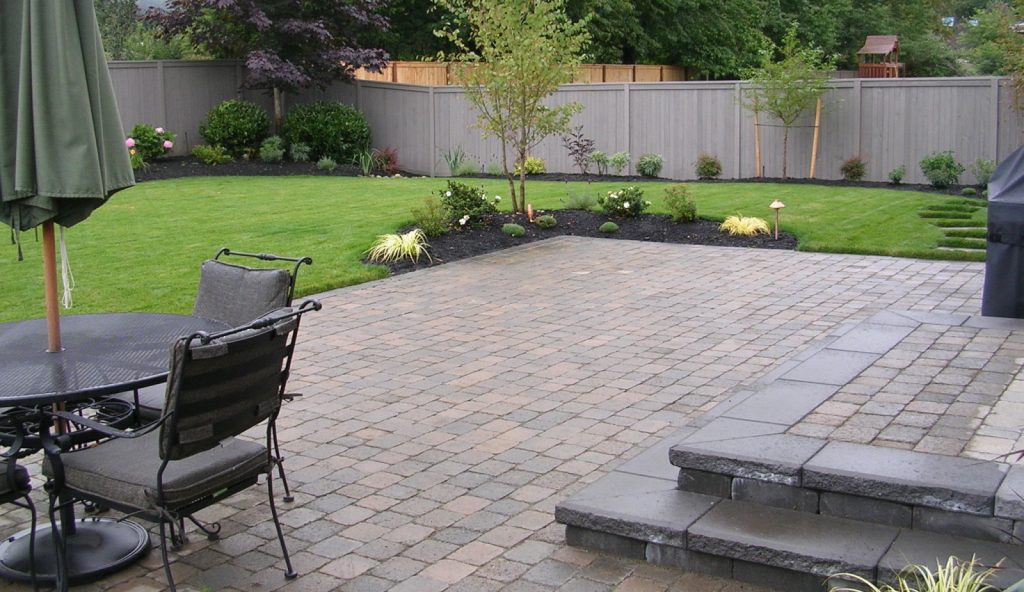Urban planners are looking for ways to reduce the solar heat captured by asphalt pavement. It seems a smartly managed tree shade program is the best approach.
A quarter century ago the City of Chicago discovered in the worst way what the urban heat island (UHI) effect was. It was in the summer of 1995 that the Windy City had three days of triple-degree temperatures, topping out at 105ºF. Part of the problem was, unlike in desert regions and in rural areas, the city did not cool off much at night. An estimated 739 people died of heat-related causes.
The reason for this was simple: almost all cities, like Chicago, are largely built with concrete, steel, and asphalt – all materials that capture and retain heat long after the sun goes down. Where buildings, parking lots and roads exist today there once was vegetation – trees and grasslands that didn’t hold temperatures long, and even rid the area of heat through the botanical process of evapotranspiration (as trees and other plant life expel moisture, a daily process, plant heat is expelled as well).
One thing is for certain: the urban landscape, created by commercial asphalt contractors and concrete construction companies is only going to continue as more roads, streets, sidewalks, parking lots and other hardscape is constructed to ease the demand created by increasing population of people, homes and cars.
The value of trees in cities
So the general idea in reducing UHI is to bring back nature: more trees and other plants, basically. And, Chicago has been working at doing just that, with tax policies that reward building owners for installing green roofs (i.e., gardens on tops of buildings). The city has also embarked on a tree-planting program, hoping to increase the tree canopy from 17% to 20%.
One study of the city of Montreal (“The effects of street tree planting on Urban Heat Island Mitigation in Montreal,” Wang, Akbari, Sustainable Cities and Society, November 2016) found strong correlations between tree cover and summer temperatures, in both the daytime and at night. “Tree cover could reduce air temperature at the tree level (4ºC at 20 meters height from the ground), as well as higher level (2ºC at 60 meters from the ground).”
Of note, planting trees is a bit more complicated than it sounds. In Chicago and elsewhere, creating shade along streets, avenues and boulevards yields the most benefits. If you can stop solar heat absorption during the day, it also helps at night.
Trees among asphalt and concrete isn’t easy
That said, selecting the species, creating the environment for healthy root growth, placing the trees where they do the least damage to sidewalks, providing consideration to retailers’ signage, and dealing with compacted soil under sidewalks are all part of the challenge. Another consideration is climate change, anticipating the types of trees that will survive decades from now when heat, cold, drought, excessive stormwater, and invasive insects will alter the growing environment.
Fortunately, cultivars of trees are being developed that fare better in urban streetscape environments, and with natural root systems that are less likely to cause pavement and sidewalk heave. Underground structures designed to minimize soil compaction, and which channel rainwater to the tree roots, have become increasingly sophisticated. Landscape architects have learned to site trees where they perform well, but also with respect to existing structures’ architecture and retail signage in such a way that adds to rather than subtracts from the community and local commerce.
White asphalt might be a solution?
One other, relatively simple and immediate alteration to pavement would mirror the white-roofs movement, where buildings have switched from black to white membranes on flat roofs, providing a notable savings in cooling costs as well as atmospheric heat. Where feasible, white asphalt coatings that raise light reflectivity (i.e., the albedo effect) from 5% with fresh black asphalt to 50% with a white coating brings the surface temperature down significantly (from 123ºF to 90ºF on a sunny day). This of course reduces ambient temperatures in the vicinity of the road.
While an attractive option, white-coated pavement is relatively rare at this time. Tests in the Los Angeles area undertaken since 2015 have provided mixed results. The treatment lowered surface temperatures on the pavement itself, but the reflected solar heat warmed the air above it. That heat dissipates better into the night, but makes it a bit more unpleasant for, say, pedestrians on sidewalks near those streets. Ongoing research needs to clarify the net benefits, if any.
Shade trees that mix well with the built environment, of cultivars designed to endure climate change, seem to be a preferable option for now.


